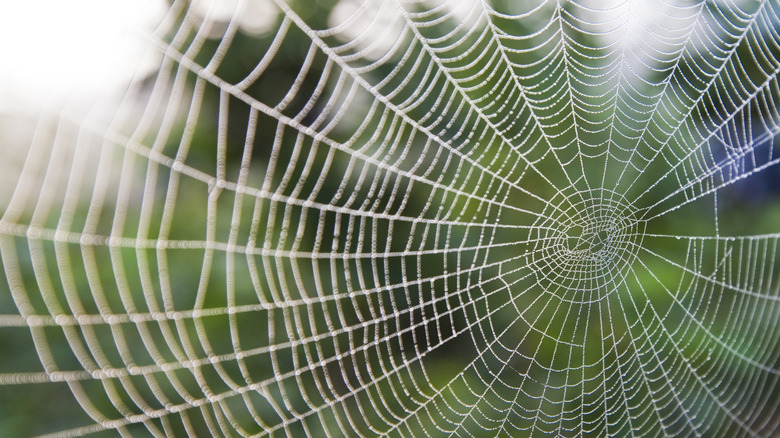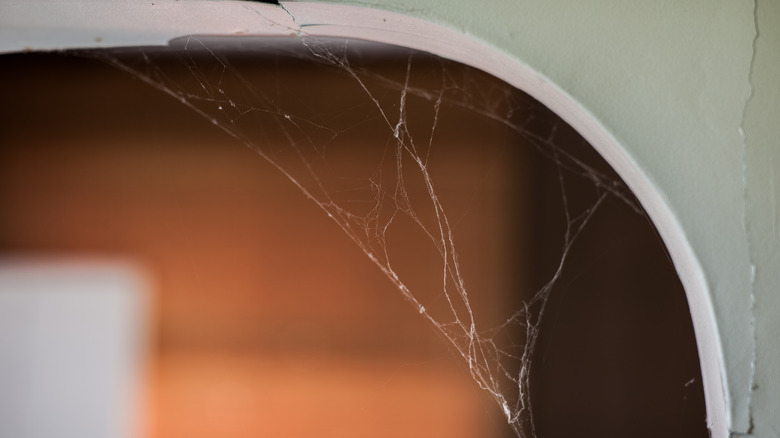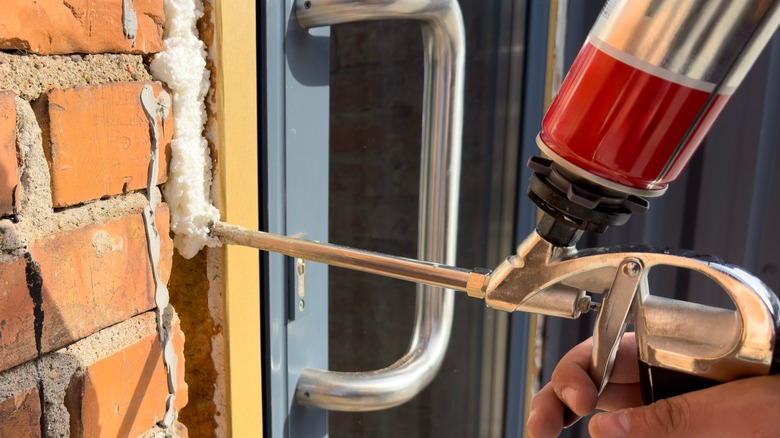You Didn't Realize That This Is What Sets Spider Webs & Cobwebs Apart Until Now
Take a look around the less-trafficked parts of your home. Chances are, you will find at least one sign of spider occupancy in the form of a spider web or cobweb. Although they may seem the same, a key difference sets spider webs and cobwebs apart. Spider webs are recently constructed and may be actively in use, whereas cobwebs are the deserted remains of former webs.
Although not all arachnids make webs, several species of common house spiders are the web-building kind, such as the European House Spider. It's not unlikely for these spiders to build their intricate silken structures in unoccupied corners, dark or empty rooms, and in areas with debris and clutter. Web-building spiders are especially common in homes where other insects are present, as they are a primary food source.
Now that you know the difference between spider webs and cobwebs, let's dive into the distinct characteristics of each so you can tell them apart. We'll also go over the most effective ways to get rid of spiders in your home. After all, nobody enjoys accidentally walking into sticky insect traps or catching sight of their haunting remains.
How to tell spider webs and cobwebs apart
As we've said before, spider webs are actively or recently used. These thread structures are essential for spiders to catch prey, lay eggs, and travel from one place to another. Unlike cobwebs, which are the abandoned remains of old webs, intact spider webs serve an immediate survival function. If you see a spider web in your home, you can safely assume its resident is not too far away.
All of this being said, a newly-spun spider web appears to be, well, lived in. The threads appear structurally intact, clean, and free of dust. Typically, the web is also sticky to the touch. This sticky coating serves the important purpose of trapping prey inside the web. If you're brave enough to look closely, you may spot flies, ants, and other insects tangled in the silky fibers.
Conversely, a cobweb has all the visual resemblances of a former spider web. The silk may appear shriveled, limp, and covered in dust. The architect has long moved on to building another web somewhere else, so you can get rid of cobwebs around the house without worrying about a spider crawling onto you. The common "thread" between spider webs and cobwebs is that they are found in places where spiders like to hang out, such as hard-to-reach corners and basements, attics, and closets, as arachnids prefer dark places without much foot traffic.
How to prevent spider webs and cobwebs in your home
It is important to keep spiders out of the house by proactively preventing unsightly webs from accumulating. Calling a professional pest control service will ensure your spider problem is handled effectively. However, there are plenty of measures you can take on your own that will help.
Start by giving your home a thorough cleaning, especially those rooms that spiders most prefer. Dusting is a chore you need to regularly do to keep spiders away from your home, as spiders find hiding spots in areas with accumulated debris. Cleaning and decluttering are essential for keeping other bugs at bay. If insects can thrive in your home, insect-eating spiders are thriving, too.
Seal up all potential access points that spiders may use to enter your home, such as windows and door frames. Spiders also make their way inside through the vents, so covering the vents with mesh screens can be effective. It's best to get this done before the start of spring, as female spiders seek places to lay their eggs as soon as milder weather sets in. Vacuum spider webs when you spot them to prevent egg sacs from hatching.


